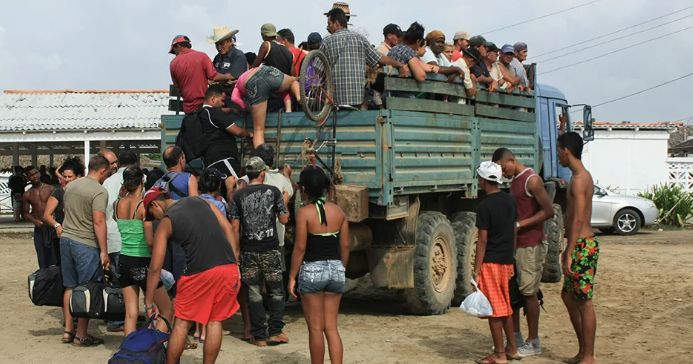By Carolina Mejía-Mantilla and Stephanie González Rubio
In the last decade, the number of international migrants has increased by 60 million, currently representing close to 3.6 percent of the global population. During the same period, the number of refugees increased by 20 million, a significant increase, because of persecution, conflict, violence, and human rights violations. Latin America is no stranger to both phenomena. Contributing close to a quarter of all migrants and refugees, the region has also experienced an acceleration of these flows.
Around 3.8 million people from those countries were living in the United States in 2021: 40 percent were from El Salvador, 32 percent from Guatemala, 21 percent from Honduras, and 7 percent from Nicaragua.
For the most part, migrants face extreme conditions on their journey, with weeks of traveling that leave some dead and many exhausted and sick. The journey is particularly hard for women and children, given the threat of violence and human trafficking. Recently, large migrant ‘caravans’ (i.e., the large groups of Central Americans cross through their states and through Mexico to reach the US-Mexican border) have brought additional public focus to the issue.
Currently, they arrive at a younger age (early twenties compared to mid-twenties), and the proportion of women has increased. Younger people and women are more prone to the dangers of irregular migration.
Our most recent study tries to answer this question by looking at North Central American countries’ main push and pull factors.
Why do they leave?
In terms of why people migrate, we analyzed three factors that have been traditionally linked to migration flows in the region:
- Limited economic opportunities and low living standards. The results from the study reveal that in North Central America, households in the poorest municipalities are more likely to have a member who has migrated, indicating that migration is an escape valve to the lack of economic opportunities. Nevertheless, not all individuals can afford to migrate as it is expensive. Thus, in these countries, migrants come from the poorest regions but not from the poorest households.
- The role of natural hazards, which are usually linked to climate change. The study shows that natural hazards linked to climate change are related to migration in Guatemala and Honduras. More specifically, for Honduras, the probability of having a migrant member is weakly correlated with the incidence of landslides, while for Guatemala, it is weakly correlated with the risk of exposure to such events.
- Violence, measured as homicide rates and protests, associated with migration. While our results did not find any association, other studies have established a causal relationship, which calls for further research.
What attracts migrants?
Better employment opportunities and higher living standards are major factors for migrants traveling to the United States. The prospect of better employment opportunities and higher living standards among migrants seems to be fulfilled.
Also, for all four countries, migrants earned more than three times what they would have earned if they had not migrated (considering the difference in purchasing power between currencies). Furthermore, migrants enjoy better living conditions than those people living in their origin countries in terms of housing, access to basic services, and digital connectivity.
What to do?
The disparities in living conditions and economic opportunities suggest that migration from the North of Central America is not likely to dwindle any time soon. Thus, it is critical to support regular, safe, and institutionalized migration from these countries. This can be done through initiatives like temporary (circular) migration programs, which require robust migration-sending systems, with strong legal and policy frameworks. A good example is the Philippines model, which proactively manages a large-scale, systematic, and legal movement of temporary migrant workers.
Improving the overall living conditions and providing inclusive economic opportunities in El Salvador, Guatemala, Honduras, and Nicaragua as well as implementing adaptation and mitigation policies to address climate change, increases the range of options for their population. While economic development might provide the financial means for migration, it also increases incomes at home, making emigration less attractive. Thus, better opportunities in the countries of origin can contribute to reducing migration in distressed situations.
![]()





